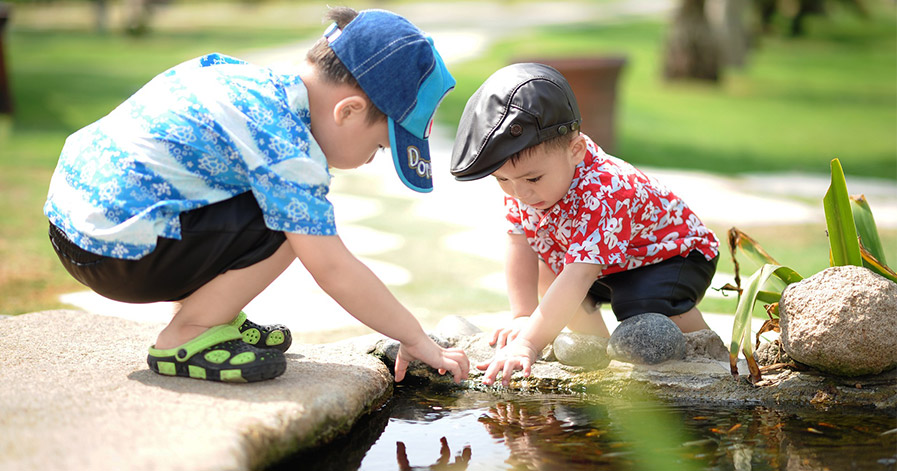Getting the Education They Need
Every student has individual needs and learning styles. Sometimes students have needs that require additional help from services that public schools can provide. These services often fall under the category of special education.
Parents may wonder if special education is an option for their child. They may ask themselves, what is special education? And what options are available for students? We’re here to help answer those questions.
What Is Special Education?
Special education is when instructional services are provided to help meet the unique and individual needs of students who specifically qualify for special education services.
In order for a student to qualify for special education services, a student must be evaluated. If the evaluation determines that a student has a disability that hinders academic performance, and that the disability would require additional services not provided in the general education classroom, the student can be referred for special education services.
IDEA—Individuals with Disabilities Education Act
IDEA is a law that protects the rights of individuals with disabilities and ensures that they will be provided a free and appropriate education. It also mandates that students with disabilities are to be placed in the least restrictive environment that still allows them to have their individual needs met.
Some of the disabilities included in IDEA are autism, blindness, deafness, intellectual disability, specific learning disability, speech or language impairment, and orthopedic impairment.
IEPs and 504 Plans
A student who qualifies for special education services under IDEA will receive an IEP (Individualized Education Program). This program is created by an IEP team comprised of the child’s parent, teachers, a psychologist, and others as needed.
The IEP will provide guidelines for the student’s educational services, including goals for the student, as well as accommodations and modifications that will be provided. The IEP must be followed by the school.
If a student does not qualify for an IEP, they can ask to be evaluated for a 504 plan. A 504 plan has a broader definition of disability, so a student who does not qualify for an IEP might qualify for a 504 plan.
Some of the disabilities or impairments that may qualify for a 504 plan include ADHD, dyslexia, illnesses, and social or emotional issues. If a student qualifies for a 504 plan, a team will assemble a plan that outlines the student’s accommodations for learning.
504 plans are not protected under IDEA and are not officially considered special education. However, they do help provide services to students who need accommodations in their learning process. They are a part of a civil rights law that grants students with disabilities the right to the same education as all students.
Classroom Options
Since each IEP is specific for individual, implementation in the classroom will look different for each student. Some plans require that students spend the entire day in a general education classroom using the modifications and accommodations as outlined in the plan. This is called inclusion.
Sometimes students will be in a general education classroom but will be provided a co-teacher inside the classroom. This teacher will be a special education teacher who works alongside the classroom teacher to make sure all the needs of all the students with disabilities are being met.
Some students will be in general education classrooms for part of the day and then in special education classrooms for the other part of the day. In other cases, a student might stay in a special education classroom for the entire day. The student will always be placed in the least restrictive environment that allows for their needs to be met.
Modifications and Accommodations
When an IEP is created, modifications and accommodations are listed.
Modifications allow a change in the actual material that a student is expected to learn. For example, a student might be required to read a shorter assignment than the rest of the class. They may be required to learn 10 vocabulary words when their peers are learning 20 words. The actual learning expectations are modified to meet the needs of the student.
Accommodations are changes in the process of learning the material instead of changes to the material itself. Accommodations could include the addition of a word bank to an assignment, allowing a student extra time to complete an assignment, providing a computer so a student can type responses instead of writing, changing seating arrangements to give the student a closer view of the board, or providing copies of the notes for a student.
IEPs provide both modifications and accommodations, whereas 504 plans usually only provide accommodations.
Assistance for Students
Many students with disabilities benefit greatly from special education. If a student has a disability, they may spend the entire day in general education classes while receiving accommodations and modifications to make the learning process more manageable for that student.
If a student needs to have a small group setting for tests, special education services might provide an additional room for the student in which they can test. If a student needs a test read aloud, a teacher or educational aide will be provided for the student.
Special education provides students with a wide variety of disabilities the help they need to have a more successful and positive learning experience.
Special Education Alongside General Education
Many years ago, special education was a separate entity from general education. Currently, special education and general education work side-by-side to help all students strive for success.
General education teachers work to ensure accommodations and modifications are met every day in class. Co-teachers provide an additional educator in the general education classroom. Special education teachers provide the support for students of varying levels of ability inside and outside of the general education classroom.
Special education is an important tool students, teachers, and parents can explore to ensure all the educational needs of the students are being met.

